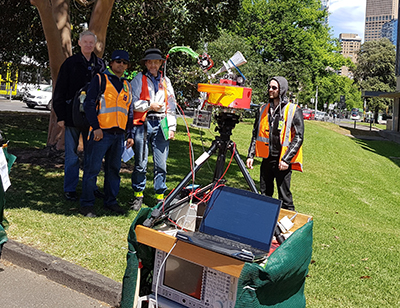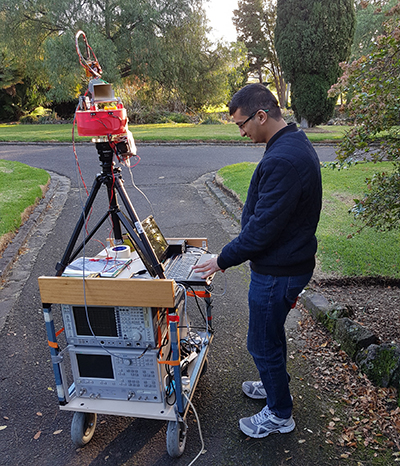Professor Michael Faulkner is a professor in Telecommunications at Victoria University and received a B.Sc.(Eng) from Queen Mary University of London, UK, and a Ph.D. (1993) from the University of Technology, Sydney, Australia. He has authored or co-authored over 100 publications and is regularly involved with industry-sponsored research.
The fifth generation of mobile systems (5G) is due for commercialization by 2020 and will operate in spectrum bands up to 86 GHz. This includes the millimetre wave bands, operating above 24 GHz, an order of magnitude higher than frequencies used today. The additional bandwidth will boost user data rates, but come at the expense of lower coverage due to higher signal path loss and attenuations due to rain, atmospheric effects and building penetration. It is therefore important to develop reliable channel models to assist the standardisation process as well as system planning and deployment by the Telco operators. The research being conducted at Victoria University (VU) aims to identify performance and compatibility issues under local conditions.
The anticipated use case for mm-waves is the ‘hot spot’, because of the high capacity and low coverage requirement. However due to recent developments in multi-element high gain antennas (known in the industry as Massive-MIMO) other scenarios should also be possible. Measurements were therefore performed covering all the major use cases, which are, in order of reducing cell size: Rural Macro, Urban-Macro, Urban-Micro and Indoor hotspot. Macro cells mount the base station antenna above rooftop level, while Micro cells mount it below rooftop level.
Statistical models require many measurements of path-loss, angle of arrival and delay spread, so some automation is required. Undergraduate students built a 3d-printed pant-tilt mechanism carrying a 25dBi horn antenna and controlled by LabVIEW software. The radio frequency component was based on standard instruments and a software radio peripheral (USRP from National Instruments). Measurements were taken at 24GHz, 27GHz and 39GHz.

An interesting observation is that the signal is heavily attenuated by foliage and some building materials. Concrete for example will completely block the signal, making outdoor to indoor transitions difficult. This is not always a bad thing, indoor hotspots such as a shopping centres should therefore be well isolated, enabling frequency reuse in adjacent buildings.

The new bands are often shared with other services such as fixed link and satellite, making it important that the new mobile services do not cause interference. VU have conducted measurements to estimate the building exit loss at different satellite slant paths (vertical angles of departure). The results were recently submitted to the ITU (International Telecommunications Union) who will aggregate measurement from other organisations, and recommend on the exact 5G frequencies to be used at the next World Radiocommunication Conference (WRC) meeting in Geneva 2019.
VU acknowledges collaborating with Telstra and Ericsson Research (Sweden). Telstra is funding the work and has fed the findings into international standardisation bodies: 3GPP (third generation partnership project) which is responsible for 5G, and the ITU which recommends spectrum allocations and operating procedures.